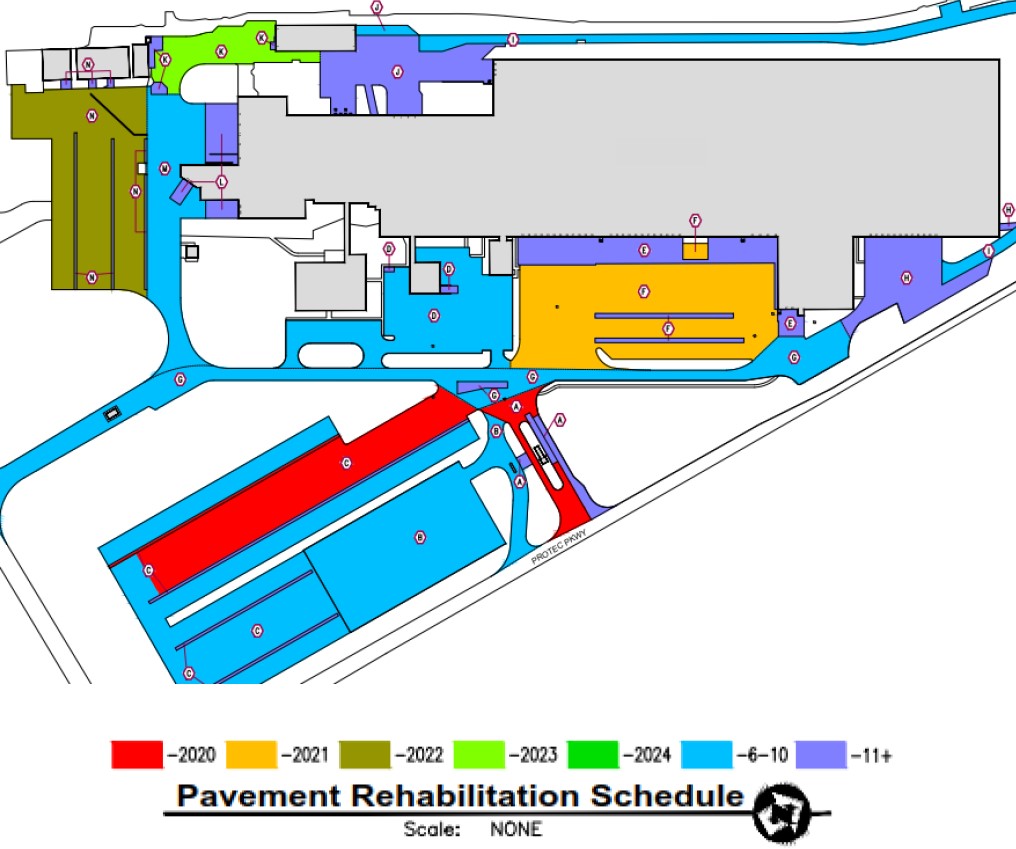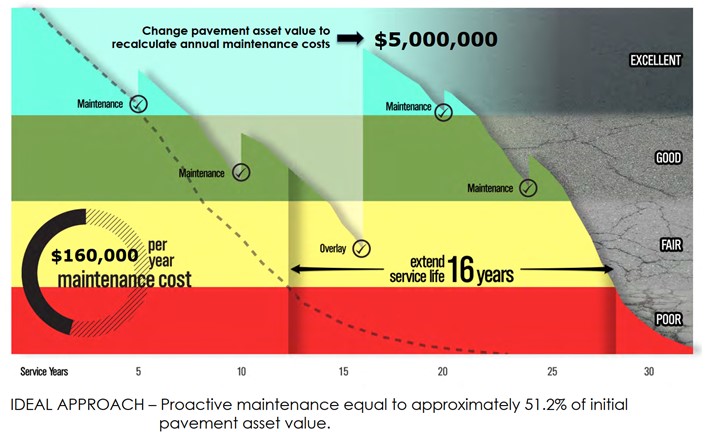 By Troy Kaiser
By Troy Kaiser
Senior Consultant
You have already established you need funding to manage the pavements at your site–now what? Be prepared with funding requests and consider these three steps:
1. Prioritize Your Needs
Having a well-thought-out, multi-year plan of attack demonstrates to management early on that you have a full understanding of the condition of your pavements and how immediate and future funding should always be prioritized with the goal of saving money in the long term. Performing a site-wide pavement evaluation that includes documented pavement conditions establishes a baseline so changes can be tracked in future years. Pavement condition documentation also outlines the differences between pavement areas that is used for prioritization. These conditions help to establish which pavements would benefit from preventive maintenance, repairs (including any safety issues), or a form of rehabilitation both now and in the future.

2. Establish Budgets
 Now that you have outlined priorities for managing your pavements, it is important to establish the high-level budget cost projections over the multi-year management plan. Budgets are best and most well-defined if they are based on recent bid/market pricing of prior similar pavement maintenance, repair, or rehabilitation work. Budgets are also better defined through geotechnical exploration or pavement coring at a minimum.
Now that you have outlined priorities for managing your pavements, it is important to establish the high-level budget cost projections over the multi-year management plan. Budgets are best and most well-defined if they are based on recent bid/market pricing of prior similar pavement maintenance, repair, or rehabilitation work. Budgets are also better defined through geotechnical exploration or pavement coring at a minimum.
Contractors can typically provide pricing guidance for preventive maintenance and repairs. However, more complex rehabilitations and reconstructions may require professionally prepared design plans, specifications, solicitation of construction bids, project administration, and construction observation. Budgets should align to the right approach and help ensure the optimal design and life expectancy are achieved.
Coring for geotechnical exploration.

Overview of new pavement.
3. Present the Business Case
Before presenting a case for pavement funding to upper management, be sure it is clear, concise, and weighs the risks involved if funding is deferred, delayed, or altogether rejected to what long-term benefits will be received through the spending. Justification needs to be based on the documented conditions and forecasts for pavement life expectancy. If pavements in good to excellent condition are not well maintained, conditions could decline rapidly. Pavements approaching failure could have the greatest potential long-term cost benefit if rehabilitation is timed properly. The simple premise behind management strategies for asphalt pavements is that the upfront investment in preventive maintenance and rehabilitations can easily save 3 to 5 times the cost than if conditions are allowed to decline to their failure point, requiring full reconstruction.

A comprehensive evaluation report has plans, charts, graphs, and documentation to support justifying why pavement funding is needed.
There are no guarantees for securing funding requests these days, so increase your chances and be prepared with the goal of establishing the right funding for your needs in maintaining and improving the serviceability and life of the pavements at your site.
